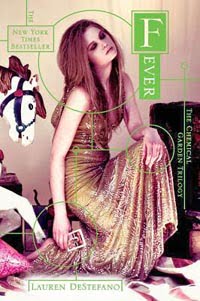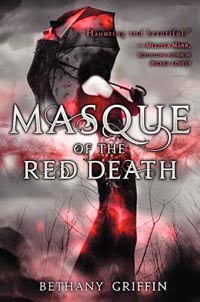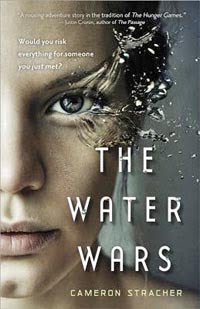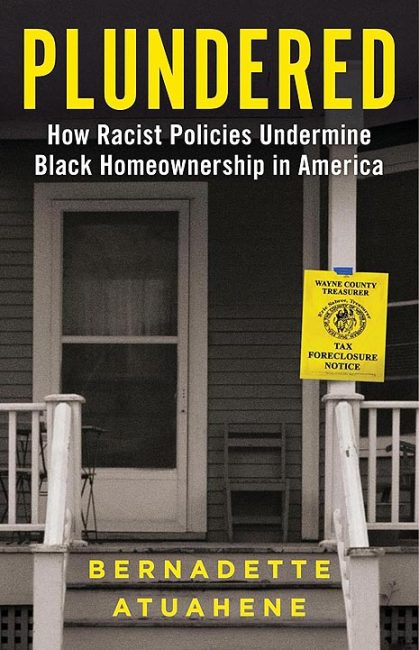Book Bag: July 2012
Dystopian Deluge: Dismal Imaginings of Earth’s Futures
reviews by Sharon L. Shervington
It’s not that dystopian visions have not been a part of great literature for a good long time. Think Orwell’s 1984; Bradbury’s Fahrenheit 451; or the lesser known, but still possibly prescient, Parable of the Talents and Parable of the Sower, by Octavia Butler, or Ira Levin’s This Perfect Day. But in the last couple of years the market for these dark tales has exploded. And some of them are not only really fun but also satisfyingly thought-provoking.
These are tales of the aftermath of wars, massive plagues, destruction of the earth and thus limited resources, often accompanied by a range of romantic relationships in the face of death. Of course, The Hunger Games jumpstarted this subgenre in a big way, including just about all of those elements. If you enjoyed that trilogy, here are more series and some standalones that will be sure to please:
 Insurgent, by Veronica Roth (Katherine Tegen Books; $17.99; 525 pages) is the second book of a series that began with Divergent. Here, in the ruins of Chicago, when teenagers turn 16 they must choose lifelong membership in one of five clans; Amity (the peacemakers); Abnegation (the selfless); Erudite (the scientific and brilliant); Dauntless (the fighters) or Candor (the truth-tellers). Initiates are tested, and if they fail they become outlaws or factionless. In Insurgent the action gets more political and personal as Dauntless heroine Tris, one of a handful of clan-crossing Divergents, discovers a monstrous conspiracy as she comes into her own, learning important lessons about family and maturity.
Insurgent, by Veronica Roth (Katherine Tegen Books; $17.99; 525 pages) is the second book of a series that began with Divergent. Here, in the ruins of Chicago, when teenagers turn 16 they must choose lifelong membership in one of five clans; Amity (the peacemakers); Abnegation (the selfless); Erudite (the scientific and brilliant); Dauntless (the fighters) or Candor (the truth-tellers). Initiates are tested, and if they fail they become outlaws or factionless. In Insurgent the action gets more political and personal as Dauntless heroine Tris, one of a handful of clan-crossing Divergents, discovers a monstrous conspiracy as she comes into her own, learning important lessons about family and maturity.
 The second volume of the Chemical Gardens trilogy, Fever (by Lauren DeStefano; Simon & Schuster; $17.99; 341 pages.) also fits this group, though its pacing is generally slower than in the first book, Wither. Set in a world where genetics gone wild have resulted in the deaths of girls at 21 and boys at 25, wealthy families finance groups of kidnappers to grab girls for polygamous marriages in the hope that there will be some kind of scientific breakthrough that will restore normal life spans.
The second volume of the Chemical Gardens trilogy, Fever (by Lauren DeStefano; Simon & Schuster; $17.99; 341 pages.) also fits this group, though its pacing is generally slower than in the first book, Wither. Set in a world where genetics gone wild have resulted in the deaths of girls at 21 and boys at 25, wealthy families finance groups of kidnappers to grab girls for polygamous marriages in the hope that there will be some kind of scientific breakthrough that will restore normal life spans.
In Wither this happens to protagonist Rhine, and she is married into a wealthy yet deeply creepy family in Florida. She escapes from the mansion where her father-in-law is eager to begin experimenting upon her. She escapes with her lover and the pair race up a nightmare East Coast of the U.S. in search of her twin brother who is in New York City, Rhine’s home town, chased by her father-in-law and others. Look for elements of Margaret Atwood’s The Handmaid’s Tale and the classic film AI.
 As my space here is limited I just want to mention a few other standouts: The Death Cure, the climax of James Dashner’s Maze Runner trilogy, features great characters and settings, mind control, a drug-fueled plague and a battered earth. Each book is better than the last, and the whole is thoroughly original (Delacorte Press; $17.99; 324 pages.)
As my space here is limited I just want to mention a few other standouts: The Death Cure, the climax of James Dashner’s Maze Runner trilogy, features great characters and settings, mind control, a drug-fueled plague and a battered earth. Each book is better than the last, and the whole is thoroughly original (Delacorte Press; $17.99; 324 pages.)
Also highly original is The Masque of the Red Death, a very different and modern—even debauched—spin on the classic Edgar Allen Poe story. This one is dark and yet crisply elegant. (By Bethany Griffin; Greenwillow Books; $17.99; 319 pages.)
The Water Wars is a story of family, friendship, and loyalty in a world gone  mad from lack of water and a conspiracy between water pirates and governments that want absolute control over the increasingly scarce resource. Sound familiar? (By Cameron Stracher; Sourcebooks; $9.99; 240 pages)
mad from lack of water and a conspiracy between water pirates and governments that want absolute control over the increasingly scarce resource. Sound familiar? (By Cameron Stracher; Sourcebooks; $9.99; 240 pages)








